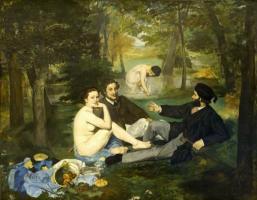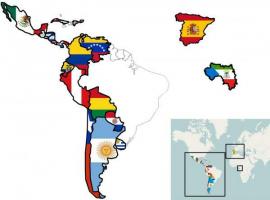Catalan MODERNISM in architecture
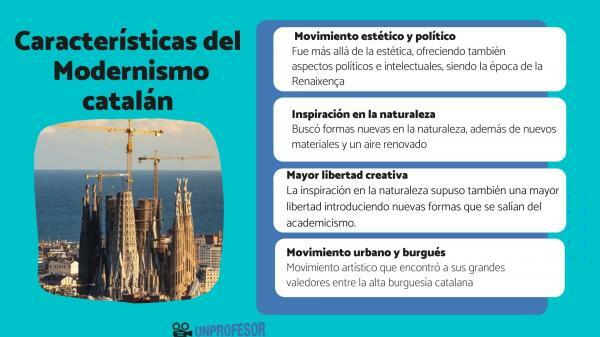
The Modernism it's a cultural movement that developed in the Europe of the late nineteenth and early twentieth centuries. A cultural movement that affects all manifestations of art, from literature to architecture and the plastic arts. In the case of Catalonia, Modernism erupted with force from approximately 1885 until 1920. Some 30 years in which you can find masterful examples of this new artistic movement.
A mainly architectural movement and that it was greeted with enthusiasm by the Catalan upper bourgeoisie, cultured and with a desire to express their desire for modernization, their identity, as well as to record their wealth. In this lesson from unPROFESOR.com we show you which are the characteristics of Catalan Modernism so you can recognize and enjoy a splendid and sumptuous art style.
Index
- Aesthetic and political movement
- Inspiration from nature, another of the characteristics of Catalan Modernism
- Greater creative freedom
- Modernism was an urban and bourgeois movement
- Stages of Catalan Modernism
- Characteristics of Catalan modernist architecture
- Other expressions of Catalan Modernism
Aesthetic and political movement.
The Modernism was a international movement whose inspiration was nature and technological renewal consequence of the Second Industrial Revolution. A movement that evolved differently in each country due to the cultural peculiarities of each one.
In the case of Catalonia, Modernism went beyond aesthetics, offering also political and intellectual aspects, being the time of the Renaixença, a cultural and literary movement that celebrates the rebirth of Catalan as a literary and cultural language.
Inspiration from nature, another of the characteristics of Catalan Modernism.
Modernism sought new ways in nature, in addition to new materials and a renewed and modern air, avoiding the basic, arid and not very suggestive style of industrial architecture. An influence that will be reflected in construction materials, building plan and façade design.
Thus, it was an artistic movement in which architecture had a great weight with great figures such as Lluís Domènech i Montaner, Puig i Cadafalch Y Antoni Gaudí, architects with whom painters such as Santiago Rusiñol and Ramon Casas or sculptors like Eusebi Arnau and Josep Llimona, among others.
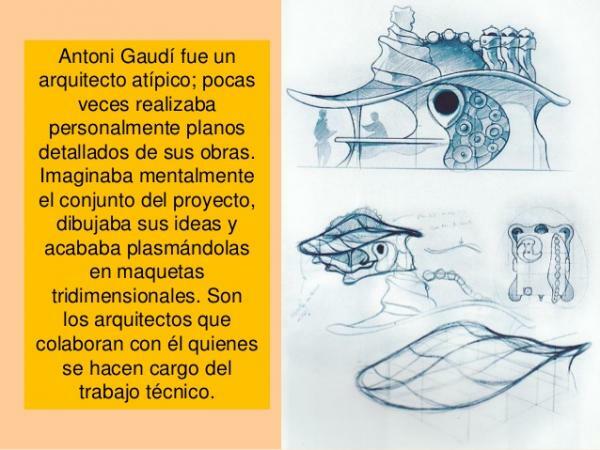
Image: Slideshare
Greater creative freedom.
Another characteristic of Catalan Modernism is that it is a movement that is committed to greater freedom when creating. The inspiration in nature It also meant greater freedom by introducing new forms that went beyond academicism. A renovation that also resulted in the revitalization of the so-called minor arts or craft trades such as cabinetmaking, goldsmithing or glassmaking. Some crafts that rose to the category of art.
Sculptors and architects will seek the preciousness and will place figures and shapes of plants or animals as decorative elements in the exteriors. Larger sculptures such as animals or mythological characters will also be used, in addition to introducing craft materials such as ceramics or wrought iron lattices.
Modernism was an urban and bourgeois movement.
It was an artistic movement that found its great supporters among the Catalan upper bourgeoisie. A cultured bourgeoisie with great sensitivity for art, becoming patrons of artists. This was the case of Count Güell with Antoni Gaudí.
Thus, as the experts point out, "Modernism is the world of luxury, architecture combined with decoration, art & crafts".
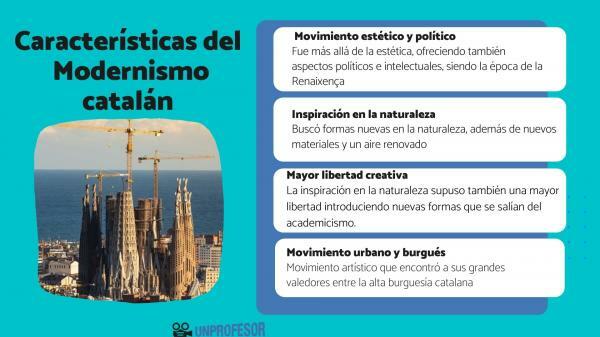
Stages of Catalan Modernism.
Usually three phases are indicated in the development of Catalan Modernism:
- A pre-modern phase which extends from the second half of the 20th century to the Barcelona International Exposition of 1888, years in which the urban areas outside the city began to be developed following the Cerdá Plan (1859). The architecture of those years will be very eclectic.
- A phase of fullness that spans from 1888 to 1914. The industrial revolution was an incredible economic development, especially industrial, and urban development. An advance to which the great fortunes that left Cuba after the disaster of 1898 will also contribute. At a technological and cultural level, the Universal Exhibition of 1888 will be one of the greatest influences, being key in the cultural renewal of Catalan, as well as in all the manifestations artistic.
- And one final phase which lasts between 1914 and 1926, the year of Gaudí's death, or, for other authors, 1929, the year of the International Exhibition of Barcelona.
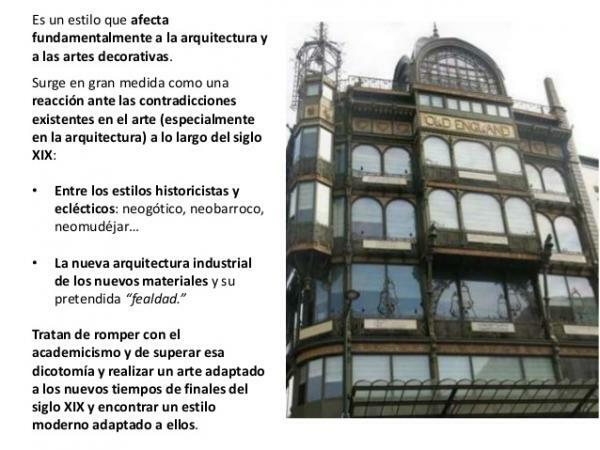
Image: Slideshare
Characteristics of Catalan modernist architecture.
To continue knowing the characteristics of Catalan Modernism, we are now going to focus on the architecture in a concrete way.
- Predominance of curve lines.
- A rich and sophisticated decoration.
- The taste for organic shapes inspired by nature as decorative motifs.
- Introduction of New Materials such as stained glass, wrought iron, ceramics, tiles, and so on.
- Use of bright and intense colors.
- The mixture of elements of exotic or ancient architectural styles like Gothic or Islamic architecture.
- Modernist architecture presents two clear currents: one rationalist current, with Domènech i Montaner at his head; and another irrational current, with Gaudí as a prominent figure, which is linked to the organicism of Frank Lloyd Wright.
Other expressions of Catalan Modernism.
We end this lesson on the characteristics of Catalan Modernism attending to other influential artistic disciplines, also, in this current.
Catalan modernist painting
Catalan modernist painting also presents two trends: one symbolist influenced by English Pre-Raphaelite; and a modernist realism, with more prosaic themes and more vigorous brushstrokes.
Catalan modernist sculpture
Modernist sculpture also offers these two trends, one symbolist and another naturalist.
If you want to read more articles similar to Catalan modernism: characteristics, we recommend that you enter our category of Story.
Bibliography
VVAA (2015). Modernism, architecture and Catalan art S. XIX-XX. Loft Publications

